Publication 102 - Wisconsin Tax Treatment Of Tax-Option (S) Corporations And Their Shareholders Page 3
ADVERTISEMENT
Wisconsin Tax Treatment of Tax-Option (S) Corporations and Their Shareholders
O
I. INTRODUCTION
profits, doesn’t apply for Wisconsin purposes. Thus, a
corporation that was a tax-option (S) corporation for
Wisconsin for any taxable year beginning before Janu-
This publication is designed to assist a tax-option (S) cor-
ary 1, 1983, and is a tax-option (S) corporation for its
poration and its shareholders in preparing their 1997 Wis-
first taxable year beginning after December 31, 1996,
consin franchise or income tax returns.
may not reduce its accumulated earnings and profits by
any amount accumulated in pre-1983 S corporation
Under federal law, an S corporation is one that has an
years. Distributions from pre-1983 tax-option (S) corpo-
election in effect for a taxable year under Subchapter S of the
ration years will continue to be taxable as dividends for
Internal Revenue Code which permits the corporation’s
Wisconsin purposes.
income to be taxed to its shareholders rather than to the
corporation itself, with certain exceptions. If the corporation
•
IRC section 1366(f), relating to the reduction in pass-
incurs a loss, the loss is treated as the shareholders’ loss.
throughs for taxes at the S-corporation level, is modified
Under Wisconsin law, a tax-option (S) corporation is one that
by substituting the Wisconsin built-in gains tax for the
is treated as an S corporation federally and has not elected
taxes imposed under IRC sections 1374 and 1375.
out of Wisconsin tax-option status.
Other federal law changes enacted after December 31, 1996,
generally won’t apply for Wisconsin purposes unless subse-
Caution: The information in this publication reflects inter-
quently adopted by the Wisconsin Legislature, except for
pretations by the Wisconsin Department of Revenue of
depreciation and amortization as noted below.
laws enacted by the Wisconsin Legislature as of Decem-
ber 15, 1997. Laws enacted after this date, new adminis-
For property placed in service in 1997, you may compute
trative rules, and court decisions may change the interpre-
depreciation or amortization under the same method as for
federal purposes. Otherwise, compute depreciation or
tations in this publication.
amortization under the Internal Revenue Code as amended to
December 31, 1996, for property placed in service before
August 6, 1997. Compute depreciation or amortization under
O
the Internal Revenue Code as amended to August 5, 1997,
II. DEFINITIONS APPLICABLE TO TAX-
for property placed in service on or after August 6, 1997.
OPTION (S) CORPORATIONS
Note: Federal law provides a deduction for 40% of the health
A. Internal Revenue Code
insurance costs of self-employed individuals, including 2%
shareholder-employes of tax-option (S) corporations. For
For taxable years that begin in 1997, “Internal Revenue
Wisconsin income tax purposes, these shareholder-employes
Code” means the federal Internal Revenue Code (IRC) as
may be able to subtract the remaining 60% of the cost of
amended to December 31, 1996, and as amended by the
certain medical care insurance.
provisions of the federal Balanced Budget Act of 1997
(Public Law 105-33) and Taxpayer Assistance Relief Act of
B. S Corporation
!997 (Public Law 105-34) that take effect before January 1,
1998, with the exceptions explained below.
To qualify for federal S corporation treatment under the
Internal Revenue Code for taxable years beginning after
The federal law changes that were adopted apply for Wis-
December 31, 1996, a corporation must meet all of the
consin purposes at the same time as for federal purposes. As
following requirements:
a result, the federal changes to the S corporation rules made
by the Small Business Job Protection Act of 1996 (Public
•
It must be domiciled in the United States. That is, it must
Law 104-188) generally apply for Wisconsin at the same
be created or organized in the United States under
time as federally.
federal or state law.
The following provisions of the Internal Revenue Code don’t
•
It must have no more than 75 shareholders.
apply for Wisconsin purposes:
•
It must have as shareholders only individuals, estates,
•
Section 1311 of P.L. 104-88, relating to the elimination
and certain trusts. Grantor trusts, voting trusts, qualified
of earnings and profits from pre-1983 S corporation
Subchapter S trusts (QSSTs), electing small business
years from an S corporation’s accumulated earnings and
1
ADVERTISEMENT
0 votes
Related Articles
Related forms
Related Categories
Parent category: Financial
 1
1 2
2 3
3 4
4 5
5 6
6 7
7 8
8 9
9 10
10 11
11 12
12 13
13 14
14 15
15 16
16 17
17 18
18 19
19 20
20 21
21 22
22 23
23 24
24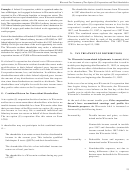 25
25 26
26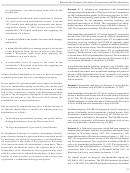 27
27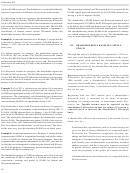 28
28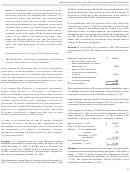 29
29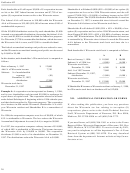 30
30








